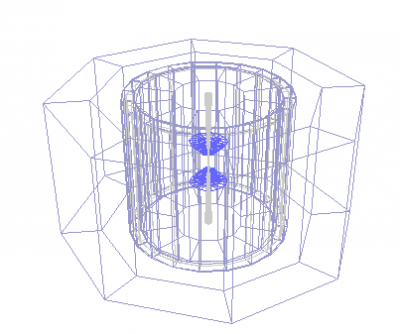Table of Contents
FCC-hh detector studies: Software and detectors
People: A.Kotwal (Fermilab/Duke), L.Gray (Fermilab), S.Chekanov (ANL), J.Strube (PNNL), N.Tran (Fermilab), S-S. Yu (NCU), S.Sen (Duke), J.Repond (ANL)
This wiki describes physics studies for a FCC-hh detector. You can download such samples as discussed in HepSim manual. This wiki is rather generic, but the detector is still evolving. So, please pay attention to the detector we are using for the ongoing studies.
The results shown on this page use the Jas4pp data-analysis package. The installation does not have external dependencies besides Java. Make sure Java7 and above is installed. Then run these commands to install the package using Linux/Mac with the “bash” shell:
wget http://atlaswww.hep.anl.gov/asc/jas4pp/download/current.php -O jas4pp.tgz tar -zvxf jas4pp.tgz cd jas4pp source ./setup.sh # takes 5 sec for first-time optimization
The last command optimizes Java packages for the Python language. Now you are ready to run over any file with truth-level and datector-simulation files, such as LCIO and ProMC. This program can be used for:
- Downloading and searching HepSim data
- Processing ProMC files from HepSim
- Running over SLCIO files with Geant4 simulated / reconstructed events.
- Data analysis (jets, physics vectors, histogram packages)
- Visualisation of reconstructed events using Wired4 display
You can find more details in Jas4pp manual. The example showing how to run over SLCIO files using Jas4pp are located in the “examples/slic” directory of the Jas4pp package.
LCIO event structure
The standard set of containers is available from the LCIO files posted on HepSim. Read Manual. The API is described in LCIO Java API description.
Look the Java API definition of the needed objects in org.lcsim.lcio. The data containers are shown below:
Using C++/ROOT with LCIO
If you need to read LCIO files in C++ code with ROOT/FastJet, use this example package:
wget http://atlaswww.hep.anl.gov/hepsim/soft/lcio-cpp.tgz -O - | tar -xz; cd lcio-cpp; make
It will compile “example.cpp” file linking FastJet package. Look at README file to see how to install the “LCIO” package required by this example. Your LCIO“ files from HepSim should be in the directory “data”.
Wired Visualization
The current version of the FCC-hh detector is located in the detector repository. Find the zip file with your detector, say “detector.zip” file (“detector” is the actual name of your detector). You can study this geometry using the “description” link.
To visualize this detector, use Wired4. Download the “detector.zip” file, unpack and locate the file “detector.heprep”. Then run it as:
jaspp detector.heprep
Generally, when you open SLCIO file, this detector geometry is copied to the cache directory (in $HOME/.lcsim).
Alternatively, visualize the detector as [File]-[Open data source]-[HepRep] XML. You will see the detector layout.
Now, we will read the event: Open any *.slcio file you copied from HepSim as [File]-[Open data source]-[LCIO] file. Then click a small button [Go] (top menu bar). It will process events. Then select again [File]-[New]-[Wired 4 view]. You will get an image in the Wired4 display as this:
Now press [Go] again to look at next event.
If you want to see how data records are organized inside the slcio file, do this [File]-[New]-[LCSim Event browser]
To view “slcio” files, Jas4pp automatically downloads the detector geometry from detector repository, therefore, you do not need manual download of heprep files.
Visualizing geometry using ROOT
(contribution by N.Nikiforou):
You can also visualize the detector using ROOT. Here are a few steps: Locate the file detector.gdml inside detector.zip.
Once you have the GDML file, you can use ROOT to visualize it. You just need to make sure the ROOT installation has openGL/GDML support (CERN AFS installations have it for sure). At the ROOT prompt do:
TGeoManager::Import("detector.gdml"); gGeoManager->GetTopVolume()->Draw("ogl");
This should popup an OpenGL display with the detector which you can clip, pan, rotate etc. See this image:
People
This collection of tools for future collider studies was developed at ANL (S.Chekanov, [email protected]) in collaboration with Jan Strube (PNNL) ([email protected]) and Ashutosh Kotwal (Duke U) [email protected]. The Java part of the simulator for the linear collider was designed N. Graf, J. McCormick, T.Jonson
~~REFNOTES~~
— Sergei Chekanov 2015/10/08 09:31


